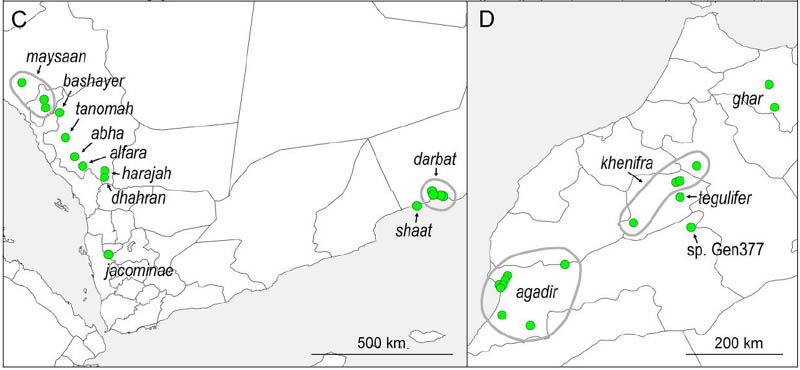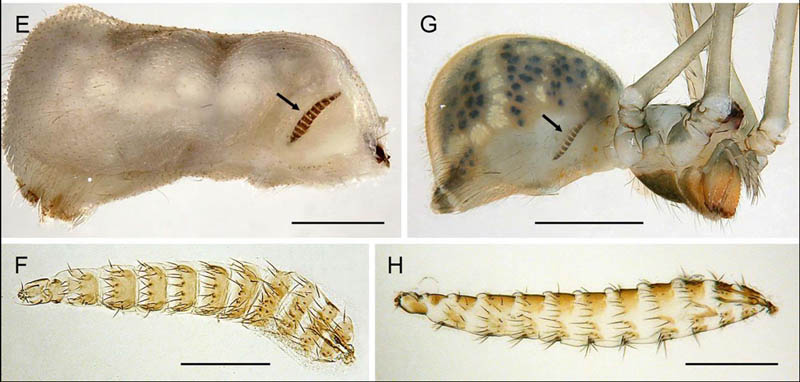Here we show that Old World Micropholcus have a much wider distribution than suggested by the single previously known autochthonous species from the Arabian Peninsula. We describe new species from the Philippines and from Morocco, and document a suprising species richness on the Arabian Peninsula (Oman, Saudi Arabia). Particularly interesting is Saudi Arabia. Recent collecting in the Hijaz mountains along the Red Sea coast resulted in seven new species; previously, Saudi Arabia was among the very few nations worldwide without any published record of Pholcidae.

Micropholcus on the Arabian Peninsula (left) and in Morocco (right).
We also provide the first records of Acroceridae (fly) larvae in Pholcidae, extracted from book lungs. Acroceridae larvae seem to develop exclusively in true spiders, with an apparent preference for wandering and burrowing species. True web-building spiders such as Pholcidae are rarely attacked, which is probably due to the fact that the flies deosit their eggs on the substrate and the emerging larvae must actively search for their hosts. However, in some pholcids, the apex of the domed web is closely attached to the substrate, and this is the section of the web where the spider spends most of the day. We thus suggest that Micropholcus spiders are accessible to Acroceridae larvae because they rest in exactly the part of the web that is closely attached to the rock surface.

Acroceridae larve in the booklungs of pholcid spiders (E, Micropholcus; G, Mesabolivar), and extracted larvae (F, G).